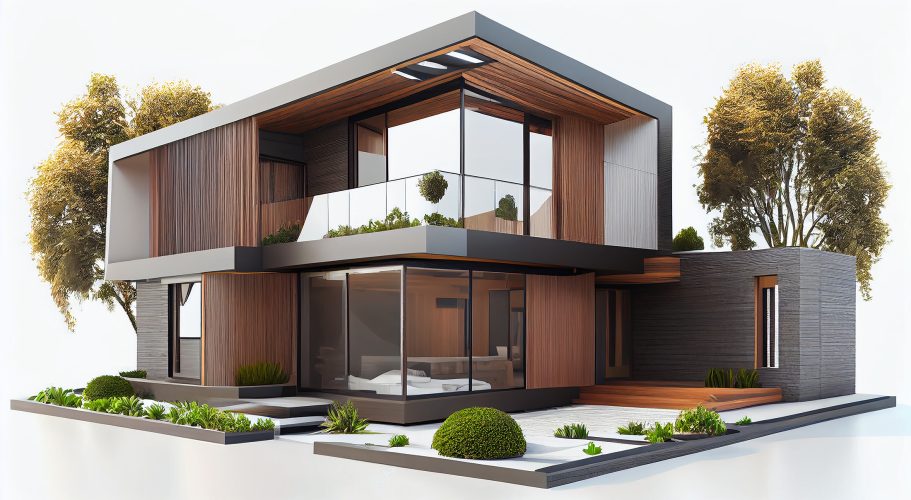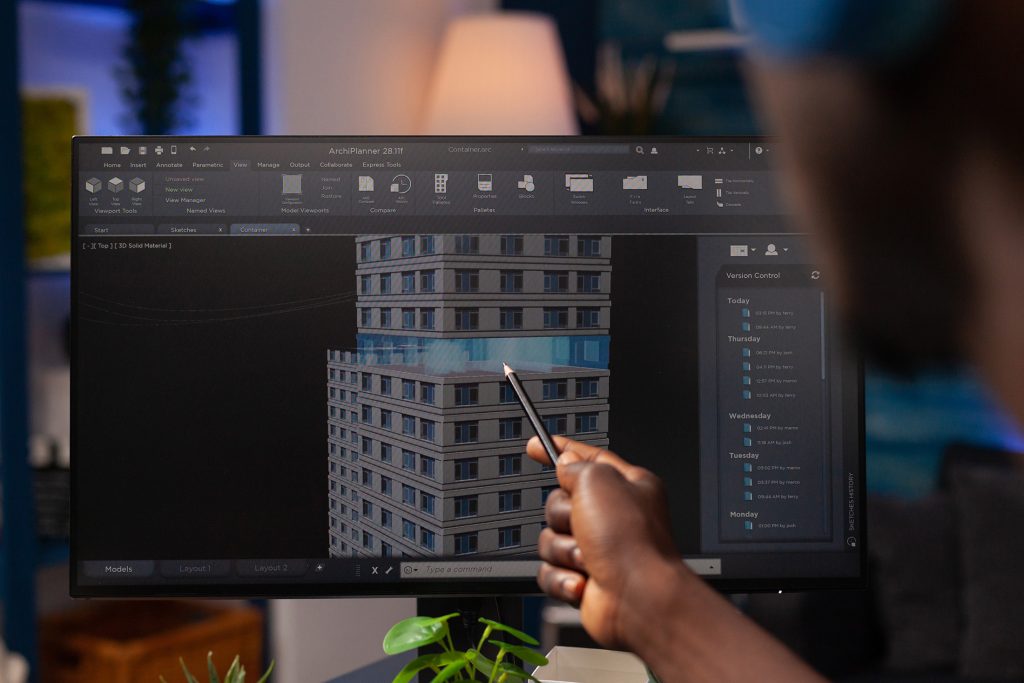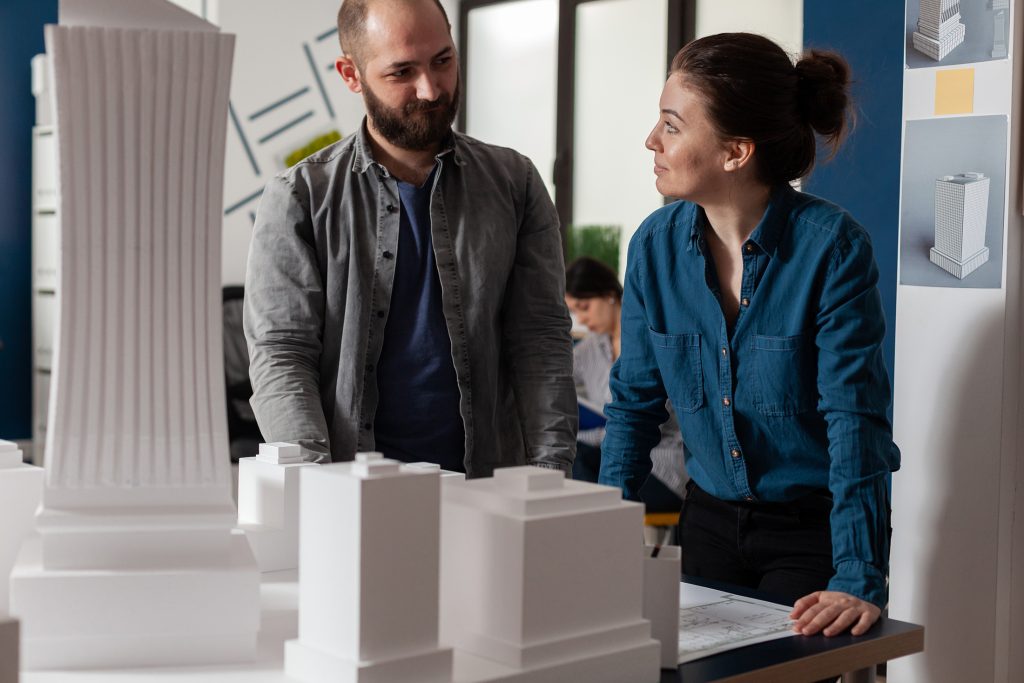
5 min read
Envision walking through a city where skyscrapers rise almost overnight, homes are custom-built in days, and architectural designs are limited only by imagination. This futuristic vision is swiftly becoming a reality, thanks to the revolutionary advancements of 3D printing and robotics in the construction industry.
These groundbreaking technologies are not solely enhancing efficiency but are organically transforming how structures are conceived, designed, and built, much like how holography is changing the face of architecture.
Joe Aoun Architecture exemplifies this transformation by integrating these innovations into their projects, pushing the boundaries of modern design and construction.
New Era Of Architecture
Visualize this – A world where homes and buildings are constructed layer by layer with precise accuracy, minimal waste, and exceptional speed. This visualization comes to life with 3D printing technology. Old construction methods, often marred by inefficiencies and manual labor, are giving way to automated processes that offer unprecedented precision and flexibility.
Magic Of 3D Printing
3D printing is like a magical conjuring art for construction that involves creating three-dimensional objects from a digital file, adding material layer by layer until the desired shape is formed.
In the architectural industry, this translates into building components or even entire structures directly from digital blueprints. Imagine concrete, one of the most commonly used materials, being printed in intricate shapes and forms, enabling architects to push the boundaries of design.

- Precision and Efficiency
Unlike traditional methods that rely heavily on manual labor, 3D printing is highly automated, reducing the margin for error. One of the most compelling benefits of 3D printing in construction is its precision. This precision ensures that each component fits perfectly, enhancing the structural integrity of the building. The efficiency of 3D printing significantly reduces construction time. A process that once took months can now be completed in weeks or even days, drastically accelerating project timelines.
- Sustainability and Waste Reduction
3D printing offers an environmentally friendly alternative to traditional construction. By using only necessary material required for each layer, this technology minimizes waste. The ability to print complex shapes without the need for additional formwork or molds reduces material consumption. This shift not only conserves resources but also reduces the carbon footprint of construction projects.
Here are some notable examples of 3D-printed architecture that showcase the potential of this technology :
1. The Office of the Future, Dubai
Killa design has developed the world’s first functional 3D printed office in Dubai. This pioneering structure, completed in 2016, showcases the potential of 3D printing technology in architecture. By employing a large-scale 3D printer, Killa Design has redefined office construction with intricate design patterns and innovative energy-efficient features. The building not only exemplifies the precision and efficiency of 3D printing but also represents a significant milestone in the future of architectural design.
2. The Yhnova Project, France
The Yhnova project, completed in 2017, is a 3D-printed residential housing project in Nantes, France. The structure was printed using a concrete mixture and features a unique, organic design. This project illustrates the potential for 3D printing to produce affordable and customizable housing solutions, with a significant reduction in material waste and construction time compared to conventional methods.
The Advent Of Robotics In Construction
While 3D printing lays the groundwork, robotics adds another layer of sophistication to the construction industry. Initial stages of the construction process are now seeing robots integrated from site preparation to final touches, boosting efficiency, safety, and precision.

- Site Preparation And Site Lifting
With their unmatched accuracy in grading and excavation, robotic technologies are transforming site preparation. With the use of advanced algorithms and GPS, autonomous bulldozers and excavators can operate continuously to prepare building sites more rapidly and effectively than in the past. In addition to handling heavy lifting and material transportation, these machines can also minimize the danger of accidents and lessen the physical strain on human workers. It feels like a horde of tireless, well-programmed robots are preparing building sites.
- Precision and Quality Control
For tasks requiring perfection and accuracy, such as welding and bricklaying, robots are utilized.For example, robotic bricklayers can ensure that walls are absolutely straight and structurally solid by laying bricks with consistent accuracy and speed. Comparably, robotic welders can execute intricate welds with greater accuracy than human welders, improving the structure’s overall quality and safety. Imagine having an elite group of robots that consistently produce excellent construction outcomes.
Here are some notable examples of Robotic Architecture that showcase the potential of this technology :
1. The MX3D Bridge, Amsterdam
The MX3D Bridge, Amsterdam is a noteworthy instance of robotic manufacture in the field of architecture. This fully operational pedestrian bridge across the Oudezijds Achterburgwal canal was built in large part because of robotic manufacture. Complicated shapes were achieved in the creation of the MX3D Bridge thanks to robotic arms equipped with 3D printing capabilities. Robotic fabrication reduced weight and waste while maintaining structural integrity, intelligently allocating material to optimize the design. Robotic fabrication helped the project by effectively implementing a difficult concept and producing complex, organic structures that satisfied predetermined criteria.
2. DFAB House, Switzerland
The DFAB House, Switzerland harnessed robotic arms and advanced digital fabrication techniques to achieve exceptional precision, efficiency, and customization. By minimizing waste and errors, robotic production created complex architectural components and automated various construction processes, such as 3D printing concrete elements and robotic lumber production. This technology enabled the precise and efficient realization of elaborate designs and intricate geometries, which would have been challenging to accomplish with traditional construction methods.
Conclusion

As 3D printing and robotics continue to evolve, the construction industry stands on the brink of a new era defined by innovation and efficiency. These technologies are not just tools but catalysts for a paradigm shift in how we envision, design, and construct our built environment. By embracing these advancements, the industry is set to achieve new heights of creativity.
The influence of these trends on architecture is already profound, with pioneers like Joe Aoun Architecture leading the charge in integrating these cutting-edge methods into their projects, heralding a future where our built environment is as dynamic and adaptive as the technologies that create it.
The influence of these trends on architecture is already profound, with pioneers like Joe Aoun Architecture consistently at the vanguard of integrating the latest methodologies into their projects. This commitment to staying at the forefront of innovation heralds a future where our built environment is as dynamic, adaptive, and sophisticated as the technologies that drive its evolution.

